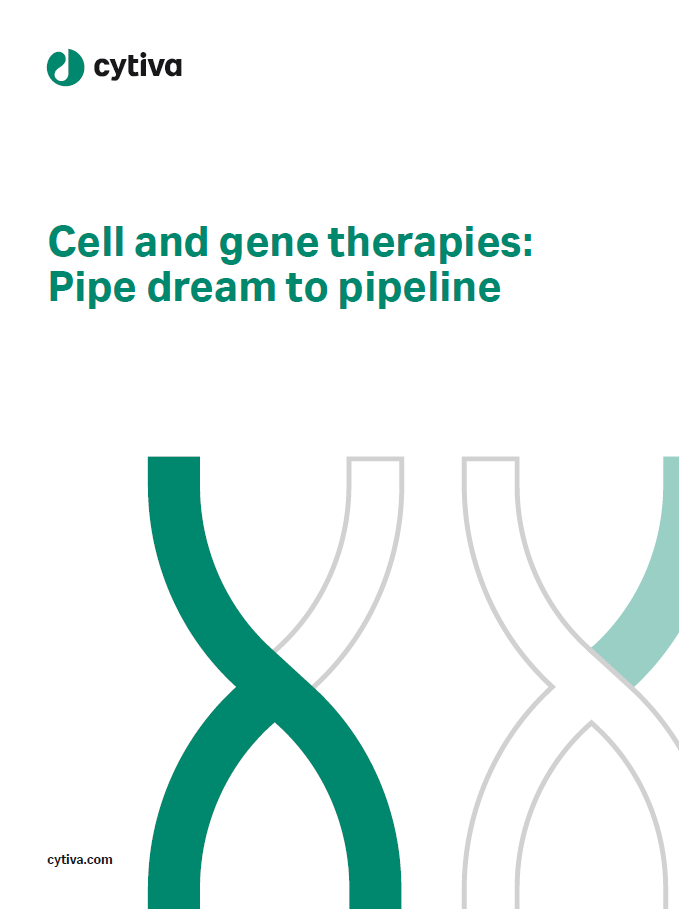

A parent’s worst nightmare is being told their child has been diagnosed with a rare disease. But being unable to access a possible cure makes it worse.
At seven months of age, Hailey and Jeff Barlow’s oldest daughter Jaylee was diagnosed a rare genetic disorder that causes severe immune deficiency and vulnerability to infections called adenosine deaminase severe combined immunodeficiency (ADA-SCiD). For treatment, Jaylee underwent a traditional bone marrow transplant after receiving a very high dose of chemotherapy. “It was such a traumatic experience for us,” shared Hailey.
However, Hailey and Jeff had heard about a gene therapy for ADA-SCiD – being co-developed by scientists at University College London (UCL) in the UK and University of California, Los Angeles (UCLA) in the US. Named simoladagene autotemcel, the therapy is not FDA approved and is only available via clinical trials. Previously named OTL-101, Orchard Therapeutics licensed the treatment from UCLA in 2016 to make it commercially available. However, in 2018, Orchard dropped the therapy after a pipeline reorganisation for financial reasons.
Dr. Donald Kohn, lead investigator of the ADA-SCiD programme at UCLA explained that families and doctors could no longer access the gene therapy after Orchard pulled out, and after increasing pressure from families, Orchard transferred the license back to UCLA in 2022. Clinical trials finally resumed in 2023 after the FDA requested amendments to the newly developed UCLA clinical protocol and manufacturing plans.
“We started keeping a list, although I didn’t know if it would ever mean anything. Once it [the gene therapy] came back to us, all of a sudden that list became the holy grail for families. Where was my child on the list? Will they be able to be treated?” said Kohn.
During her pregnancy, after Hailey learned that their child would be born with the condition through amniocentesis, she had gotten in contact with Kohn, and Hazel was placed on the waiting list for treatment before she was born. The family waited for four years for the clinical trial to restart, eventually going to UCLA to start the treatment process in January 2023.
Hailey said that they spent 10 days in hospital for the extraction and preparation of Hazel’s stem cells in the lab. In April 2023, they returned for another 10 days for Hazel to receive her stem cell transplant, following a small dose of chemotherapy.
“It has been almost a year and a half now since Hazel’s treatment and it was absolutely amazing how easy it was to go through the whole process. She never got sick. She never got down emotionally. And now she has a fully functioning immune system,” explained Hailey.
Establishing a framework to save gene therapies
Across the pond, the Great Ormond Street Hospital (GOSH) in the UK announced that it is now attempting to obtain the licence for UCLA-UCL’s therapy simoladagene autotemcel to treat ADA-SCiD on a non-profit basis, in April 2024. The importance of gaining full approval for these therapies was highlighted by Dr. Claire Booth, who leads the ADA-SCiD clinical trial at GOSH.
“Gene therapies, such as the one developed for ADA-SCiD between GOSH and UCLA, have been shown to be safe and very effective so we want to ensure that these proven treatments can be offered to patients and families quickly and simply, without the need to look at compassionate use approaches,” explained Booth.
It wouldn’t be the first time that an academic or non-profit organisation would have to ‘rescue’ a gene therapy. In September 2023, Italian research charity Telethon Foundation became a pioneer in this approach after it announced that it would manufacture and distribute a different gene therapy for ADA-SCiD, after that was also abandoned in a similar manner.
The gene therapy, dubbed Strimvelis, was developed by scientists of the San Raffaele-Telethon Institute for Gene Therapy in Milan, funded by the Telethon Foundation. In 2016, the European Medicines Agency (EMA) granted the therapy’s approval to GSK, who owned it at that time. GSK then sold the therapy to Orchard Therapeutics in 2018.
However, after Orchard reprioritised its plans in 2022, the biopharma transferred the therapy’s rights back to Telethon.
Francesca Pasinelli, general manager of Telethon Foundation explained that scientists at the San Raffaele-Telethon Institute for Gene Therapy were able to develop regulatory-grade data for the gene therapy programme, which allowed GSK to license it without having to repeat expensive early-stage studies.
“Opportunities for cross-leveraging existing data from other products remain limited and hence there is often duplication of activities, resulting in extended time and additional costs per product development programme which can significantly impact the commercial viability of certain diseases,” Pasinelli said. This type of partnership can help reduce the overall costs of gene therapy development, she explained.
Strimvelis works by editing the patients’ own hematopoietic stem cells with a functional version of the ADA gene which causes ADA-SCiD. The cells are then transferred back into the patient’s bone marrow to mature and produce the normal ADA protein.
Telethon worked closely with the manufacturing company AGC Biologics to develop and optimise the production process for their gene therapies. The enriched cells are still produced at the AGC pharmaceutical facility, located on the San Raffaele Campus of the Telethon Institute for Gene Therapy, and the treatment is administered exclusively at the San Raffaele Hospital.
Pasinelli emphasised that these types of partnerships should be complementary to the work done by pharmaceutical companies and that both non-profit and for-profit organisations have important roles to play in ensuring rare disease patients have access to effective gene therapies.
“This model can’t be unique, particularly for ultra rare diseases, where profits can be a challenge, even at very high prices. I think in the end, when you think of the very small number of patients, the real advantage is [in] saving lives,” said Pasinelli.
Nonetheless, regulatory requirements globally need to be harmonised to reduce redundant work and make the development process more efficient, while still maintaining high quality standards, adds Pasinelli.
In the coming months, the Telethon Foundation is going to apply for an EMA authorisation to market another gene therapy product originally developed in Milan—a treatment for Wiskott-Aldrich Syndrome, a rare congenital immunodeficiency.
The gene therapy, called OTL-103 (etuvetidigene autotemcel) also originated in the laboratories of the San Raffaele-Telethon Institute in Milan, and was the subject of an industrial partnership with Orchard. However, after the company divested from the program, in 2022, Telethon announced its commitment to obtain approval of this therapy by the regulatory authorities, making it available to patients.
“Rare diseases have been a very hot topic in the last few years. There are many conferences [where they are discussed], but at the end of the day, you have to provide patients with solutions.
“Patients cannot be the subject of the conference; they need to be someone we are really thinking of. We need a solution,” concluded Pasinelli.
Cell & Gene Therapy coverage on Pharmaceutical Technology is supported by Cytiva.
Editorial content is independently produced and follows the highest standards of journalistic integrity. Topic sponsors are not involved in the creation of editorial content.




